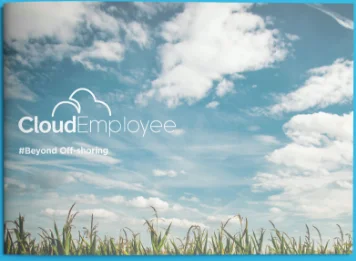You may be aware of all the advantages of remote work for both employees and employers, such as improved work-life stability, fewer long waits in traffic, greater flexibility, less pollution, and lower overhead expenses.
Even so, there are some disadvantages to working from home.
Because every employee works from home or another location, it can be difficult to maintain engagement and productivity.
If you’re wondering how to motivate and engage your employees at your own company, here are a few great tips to get you started.
There are plenty of remote companies that prove it.
1. Everything Should Be Communicated

Communication in remote teams is often overemphasized.
After all, the work gets done as long as it gets done, right?
But the truth is, communication isn’t always easy.
Researchers have found that 93% of communication is non-verbal, including body language, facial expressions, and all other little details that remote workers might miss.
In addition to missing out on many beautiful and fun moments, poor non-verbal communication can lead to conflict or other issues.
A simple sentence can be interpreted in many different ways in chat.
As a result, remote communication differs significantly in nature.
The first rule of remote communication is to teach everyone that they must always ask if they are not sure of what they have heard.
Conflicts can be avoided that way. Nevertheless, every individual should be cautious when sending messages since they can be interpreted in many ways.
2. Make Use Of The Appropriate Tools For The Task
All other roles have a fairly limited set of tools they work with.
This is also true for designers, developers, and account managers.
To stay in touch with each other and stay on top of work and progress, team members need additional apps to use along with our standard tools.
Our team communicates via Slack. It is a simple communications application that allows us to do a lot from a single location.

Our lives are made easier by chat, video and audio calls, light task management, screen sharing, and integrations with cloud apps.
Our marketing team uses Jira as well, which isn't the easiest tool to use but is excellent for developers.
No matter what tool you choose, a good project management tool is crucial to keeping your remote team engaged and motivated.
It’s up to you if you choose Jira, Asana, Trello, Teamweek, or something else.
Additionally, many companies with remote teams use Zoom for conferencing, one-on-one video calls, client meetings, and demos, among other use cases.
You can also motivate your employees with a time tracking tool.
These tools range from those that just measure the time to those that track the employee's mouse and keyboard movement as well as screenshot his or her device.
Regardless of which tracking tool you choose, note that tracking time can be beneficial for managing time, motivating yourself, and identifying time-consuming tasks.
Some options include Toggl, Harvest, PomoDone, Hubstaff, Timedoctor, and many others.
3. Set Specific Objectives And Communicate Them To Your Team


Traditional businesses may be hesitant to go remote for a variety of reasons, including a desire to maintain control.
In the absence of their employees, how can they know if any work has been done?

Employees could very well be sipping cocktails and pretending to be working at a bar for all they know.
Today's "digital nomad" lifestyle depicts remote workers working from beaches with laptops, giving managers even more reason to be concerned that employees are not performing their duties.
As a remote worker, I can tell you that I have never worked from a beach or traveled abroad. I stay productive by setting goals.
In order to keep their remote teams motivated and engaged, companies can set and track goals.
Set weekly or monthly goals for your employees to reach instead of expecting them to spend X hours a day because they must.
For instance:
Every week, write 5 articles.
Each week, create three landing pages.
In one month, introduce two new software features.
Establish clear goals and communicate them to your employees so you won't have to keep looking over their shoulders to determine whether they're working hard.
The important thing is whether the goals have been met or not.
4. Create Channels For Random Interactions
It is more than just work. Along with fulfilling our duties and responsibilities, employees also have fun together, have fun laughing and crying, and share experiences.
In remote work, not all of these moments are lost, but it is significantly more difficult to preserve them. Nevertheless, it is not impossible.
In your team chat app, you can create channels for anything other than work.

This may include hobbies, interests, pets, or whatever comes to mind.
It is a great way to learn about your remote colleagues, no matter where you work from.
Employees take turns choosing a topic and talking for an hour each week - something related to their homeland, hobbies, families, etc.
You must find ways to bond outside of work as a remote team.
The sky's the limit, and there are interesting ways to bring people from all over the world together, thanks to a variety of communication tools.
5. Provide Advancement Opportunities
Many employees are hesitant to try remote work because they fear it will put an end to their careers.
Studies have shown that employees who work in an office are seen as more dedicated to their jobs, even though in reality, they are doing the same as when working remotely, if not better.
When hiring a remote employee, make sure that they know what to expect in the future, just as people who work in a traditional office do.
Your employees will be more motivated to remain with you rather than move on to the next best offer when they have a clear career path.
SUMMARY
The more employees who work remotely, the more methods for retaining, motivating, and engaging them will become available.
Because there are so many advantages to working remotely, things are only going to get better in the coming years, and we will likely see remote work becoming an employee's first choice rather than working in a traditional office.
Work with world leading tech businesses
We connect high-performing software engineer talent in the Philippines with some of the world’s leading and most innovative Tech companies.
Submit CV













